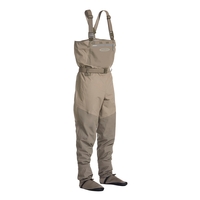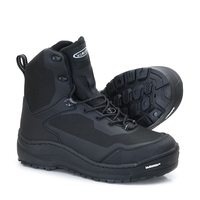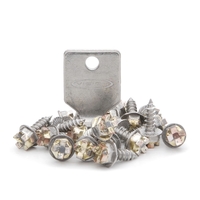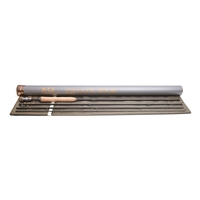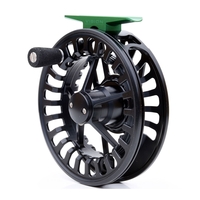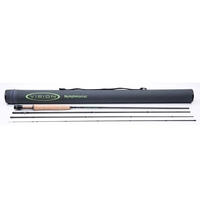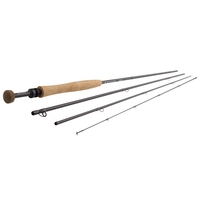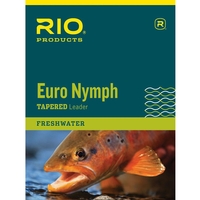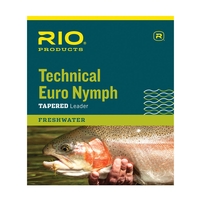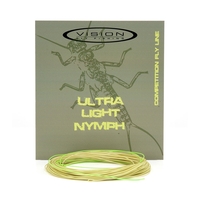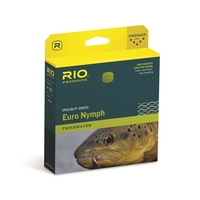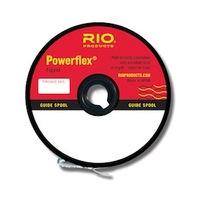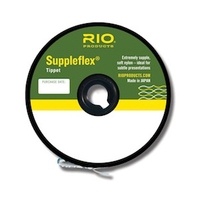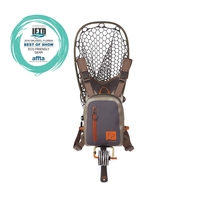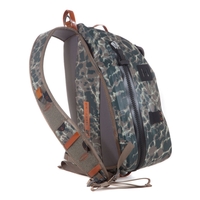Getting Into Grayling Fishing - by Steve Cullen
IF YOU'VE NEVER FISHED FOR GRAYLING BEFORE THEN YOU'RE MISSING OUT! STEVE CULLEN LOOKS AT THEIR FEEDING HABITS AND THE TACKLE YOU'LL NEED TO CATCH THIS AWESOME FISH!
There are very few fish that evoke such wonderful childhood memories for me than the beautiful grayling. Being brought up in the border town of Hawick, I grew up on the River Teviot and from a very young age, I was always near the water, much to the consternation of my family, there were just so many fish in it! The grayling shoals that used to frequent the town water in the early 1980s had to be seen to be believed. They were immense! 50 fish at a time, could be seen from the comfort of my bedroom window. You'd find them anywhere there was a decent depth of water, two-foot or more. They could be seen all the way through the river system to the 'salmon run' next to the High school at the top end of the town, a feature that seemed to hold them back from getting upstream.
As a kid I found these fish impossible to tempt on bubble float and fly, but come high water I could catch them with maggots, it was the only way, or so I thought! This all changed when one day I watched a man with a very strange rod, a fly rod was a rarity back then, catch grayling after grayling! I feel that it was that day more than any other that led me to pick up a fly rod!
Many years later, when I finally got to grips with the Lady Of The Stream, I, like a lot of anglers became hooked on catching this wonderful fish, they're just so complex at times. Also, the fight that these fish put up in fast-flowing water, once they get that immense dorsal up, is truly spectacular. In fact, some of my larger grayling, which have been caught from the Tweed system, have spent as much time out of the water as trout do! No wonder we fly fishers love them.

A Better Understanding
Grayling will feed at the water's surface, taking many of the flies that trout feed on BUT the most successful way to catch them is down deep, nymphing. They are often to be found close to the riverbed and it's down there where that your flies need to be, more on that later.
They are also very nomadic, more so in winter. At times you can cover a fair bit of water and cast into many pools before coming upon fish. At other times they are well spread throughout the system, seemingly feeding in every inch of water you care to throw a fly. As a 'shoal' fish, it's often very common to catch big numbers of them from the same area, but a word of caution. Don't get greedy. If you catch too many the fish in that shoal may not feed again properly for several days, a little restraint is often best when you encounter a large shoal of grayling.
Big fish are encountered in these shoals too, but like big brown trout, often the larger grayling are to be found on their own. Look for any obstruction, like a tree in the water, large boulders that offer shelter from the main current, or small depression in an otherwise even riverbed and the big fish won't be far away. All grayling are often happiest with a decent amount of water above their heads, water from 2ft to 5ft is what you're looking at.
Especially during the winter months look for the slower deeper pools, with a decent push of water flowing in at the head. The colder it gets, the deeper they'll go, so be aware of that.
What you'll need...
Waders and boots are a 'given' but choose the soles to suit the fishing conditions and riverbed.
|
Vision Koski Waders |
Vision Musta Michelin Felt Wading Boots |
Vision Tungsten Wader Studs With Tool |

Rod Choice
When it comes nymphing for grayling, Czech Nymphing, Bugging, Rolled Nymph, call it what you will they're all much of a muchness, then I much prefer a longer rod. Most anglers that know they're stuff do to and there's a good reason.
My preferred outfit is a 10ft 3-wt with a medium action, although recently I have been playing with a rod over 11ft, the XO Graphene and I'm loving it for the real technical stuff. But to start, go with a ten-footer. I use one pretty much all the time.
Just now, I'm using the Vision Nymphmaniac 10 foot, 3-wt rod as I feel like this what I need to do pretty much everything when it comes to nymphing. It's very lightweight and easy to handle perfect for a long day on the water. The action of this rod, it dampens after casting and so allows me to keep in contact with my nymphs all the way through the drift, is perfect for both everyday and technical fishing situations.
I also love the fact that this rod has fish measures along with the blank, from 20 to 50cm at 10cm intervals.
These longer rods - in the past all river fishing was done with 9-footers - allow you to get right on top of the fish and the softer action allows the angler to pull the hook home at close quarters without fear of putting undue strain on fine tippets. They also allow you to get so much more out of the fish when it comes to the fight. The action cushions any powerful runs that they can often make in fast, powerful water. Once they get that huge dorsal fin up and kite to the side in a strong current, things get exciting!

Now, many anglers believe that a fly reel is only there to store your line on. They're wrong! You need a fly reel that is up to the job, one which marries up to the rod and balances the whole outfit. It also needs a drag system that is both light and sensitive which, I feel, is crucial for playing big fish in fast currents.
I use Vision XLV NYMPH as it has a large arbor which reduces line memory, a must, a superb disc-brake drag, and also a comfortable EVA handle, which allows for great grip in all weather conditions.
This long rod and reel combination is the ultimate 'balanced package' when out on the water.
|
Vision XO Graphene Fly Rods |
Vision XLV Nymph & Dry Fly Reel - #5/6 |
Vision 4 Piece Nymphmaniac Fly Rods |
Redington Strike Fly Rods |
Technical Leaders
Leaders are a simple affair, there's some awesome 'off the shelf' solutions that will save you an awful lot of time and effort.
The Rio Euro Nymph Leader is 'hand-tied' and it's the perfect length for anyone looking to take an easy route into this style of fishing. The leader length is 11ft and it features unique taper, tapering from 15lb down to 8.5lb. This allows great energy transfer so that can put their flies where they need to be and in most fishing conditions. I'd also highlight the colour, they are a milky white, making it highly visible against most back grounds. This can make such a big difference, visually.
At the business end of the taper is a two-tone the indicator, 22-inches of it - you can choose either black or white or pink and yellow, colour changes are at 8-inch intervals. These are nail knotted to the leader, giving you an overall length of nearly 13ft of tapered leader.The indicators also feature a micro ring, meaning you can chop an change your tippet section at speed depending on the situation you're faced with.
Simple or what?
All you need to do is choose your tippet to fish with, well, that and the flies of course!
|
Rio Euro Nymph Leader |
Rio Technical Euro Nymph Leader |
Super Thin Fly Line
Although most of our fishing will be done with the leader only, there are occasions when the fly line will come into play. For that reason, I like a thin one, lines designed for this style of fishing. The Euro Nymph style of the fly line is what you're after. They are super thin, most are well below 0.60mm, less mass means less friction and this will let you fish your flies in a far more natural manner.
Thicker fly lines will just get pushed and pulled by the current and this means that the flies will not behave as they should do. The fish are not stupid, if your fly is moving far too fast for the surrounding environment, the fish will take one look and be like, "yeah, right, I'm not that daft".
The other benefit of these lighter, thinner lines is the fact that they are so delicate, they will alite on the water gently, allowing you to approach fish with confidence, not matter how soft the water is. They are double tapered also, so should one end be ruined, the line can be flipped so that the other end comes into play. These types of lines are ideal for slow water and crucial when targeting fish on chalkstreams where very often you can't even get within 20ft of fish without spooking them.
|
Vision Ultralight Nymph Fly Line |
Rio Euro Nymph Fly Line |
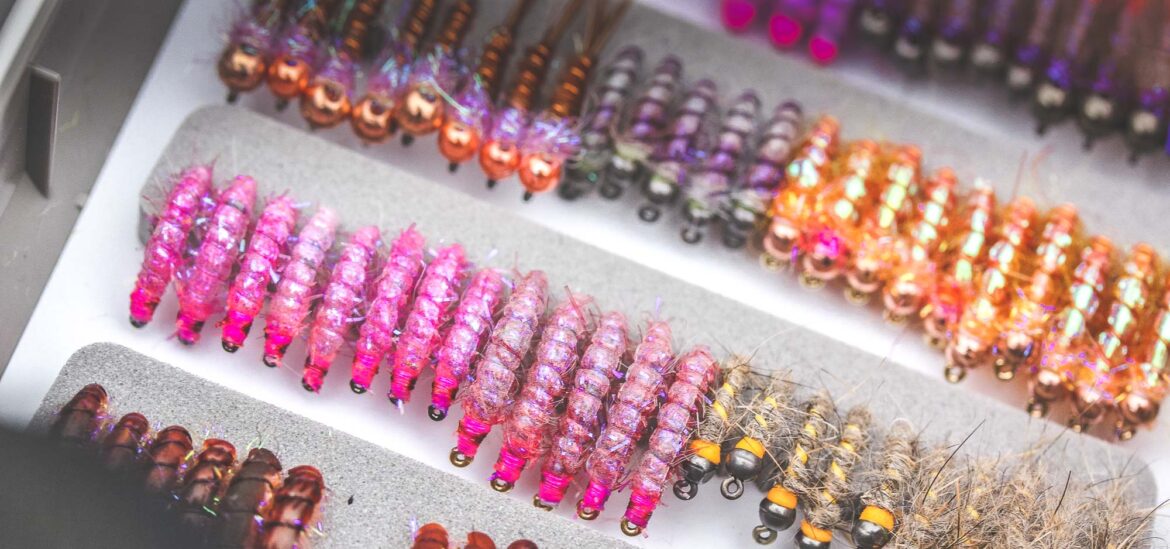
Tippet Selection
For me I have a real issue with how we in the UK view tippet, sadly we still seem to be stuck in the 'what pound tippet are you using' mentality. This is a hangover from the amount Stillwater fishing that we do. Yes, it's relevant, but for me it's more about tippet diameter when it comes to river fishing. The thinner the line, the quicker the flies sink but more importantly the connection is far superior which, in turn, WILL lead to more fish landed.
Most of my grayling fishing will see me reach for fluorocarbons, but ones with low diameters, anything from 0.16, for big, fast rivers with monster fish down to 0.10mm in really skinny water for more technical fishing.
Mostly I'll use a supple tippet, this helps with grayling believe me. I use Rio Suppleflex as it offers me everything I need when it comes to knot strength and fly presentation.
But tippet is a personal thing and you will catch grayling using other tippet materials like fluorocarbon, no worries there. Personally, I like soft tippet. Whatever tippet you choose, you can fish one, two or three flies, it depends on the river conditions. I tend to fish three flies for grayling, I mostly fish freestone rivers, and I like to keep my flies spaced 50 centimetres apart. This spacing will allow me to fish my nymphs throughout the water column from top to bottom, covering fish more effectively.
For me the heaviest fly goes on the point, with the lighter flies working back to the fly line, and example would be:
- Point: Heaviest
- Middle Dropper: Heavy
- Top Dropper: Lightest
You can alternate with flies and leader length to suit the water conditions you face on any given stretch, more of that in part two of this blog.
|
Rio Powerflex Tippet |
Rio Suppleflex Tippet |
Proven Patterns
Also in part two we'll look more closely at fly patterns and the options that are open to us, but trust me when I say that you won't go far wrong with the basics.
The basics are; Hare's Ear and Pheasant Tail Nymphs, very simple and they are as effective now as they've ever been.
Beads, tungsten is the best bet, in various sizes and colours should be incorporated in the tying. You need this additional weight to get the flies down to the grayling. I'd also suggest that often the colour of the bead can work wonders so it pays to have the above flies tied with beads of various colours and weights.
Again, referring back to basics, a gold tungsten bead on the above flies take some beating.
Other Useful Gear
|
Fishpond Thunderhead Chest Pack |
Fishpond Thunderhead Sling |
In the next part of this blog, I'll talk more about:
- Fly selection
- Fish location
- Techniques
- Playing and landing
And why the grayling has become so highly-prized by those that fish for them.
Steven Cullen



